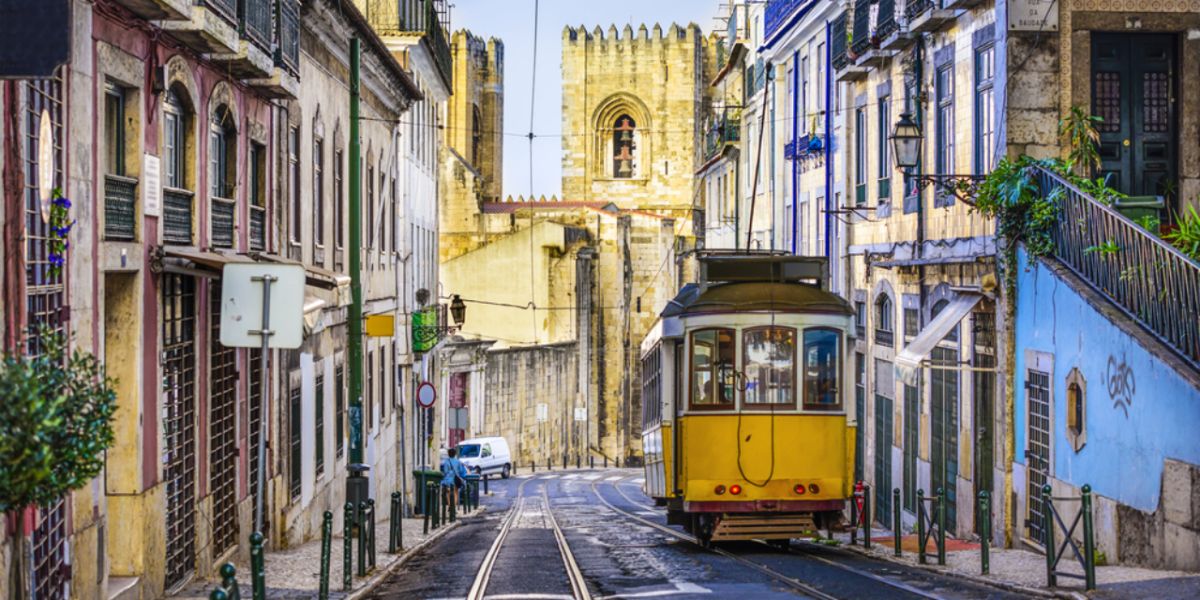
Though it is widely criticized among commuters for its noticeable inefficiency, Lisbon has a pretty reliable and diverse public transportation system, making it convenient for new arrivals to get around the city. Below is an overview of the city's transportation options, which can help expats find their way around town, plan their work commutes, and make the most of the city.
Like most capitals, Lisbon experiences hefty traffic around rush hour each weekday morning and evening, and parking in the city center is at a premium rate. For these reasons, it is strongly recommended to consider public transportation as you navigate the city.
Metro and trams in Lisbon
The Lisbon metro system is relatively modern and easy to use. In total, there are four metro lines (blue, yellow, green and red) which cover a generous portion of the city (including the airport), with new expansions planned for the near future. In order to consult the network, you may either pick up a metro map on arrival or check out Metro de Lisboa's official website. Tickets can be purchased by tapping your contactless payment card on the scanners or by using the automatic machines located inside each station (English language available). The metro runs every day between 06h30 and 01h00. Although waiting times aren't particularly short during rush hours, please bear in mind they can be quite long after 22h00.
In order to ride the metro, tram or buses, it used to be necessary to buy a VIVA card or a Navegante card (both versions cost €0.50) from the machines first, which you would then top up with any trips or any amount you'd see fit. However, nowadays, you may simply scan your regular bank card at the station, and the fare will be automatically debited from your account. Each ticket is valid for 60 minutes and for one single trip (transfers included), with the base fare currently sitting at €1.85 per journey. However, if you wish to buy a 24-hour ticket, equally valid across all platforms (7.00€), you will need to top it up on a rechargeable card. Furthermore, if you use a rechargeable card, you may also choose to load your card with money instead of trips, allowing you to take advantage of the “zapping” rates. Instead of buying a single ticket for 1.85€, you may simply top up your card with 5€ (for example). Once you scan it before taking the metro and the machine detects you have a balance instead of individual trips, it will automatically apply the discounted rate of €1.66. It's not a big difference, but why pay more when you can pay less?
Lisbon also has an above-ground tram system, and trams are a scenic way to travel and see the city, making them popular with tourists—there are several different tram lines, so pick up a map before jumping on board. Tram tickets can be purchased on board (3.20€ for a single ride), or you can use your rechargeable card and enjoy the exact same rates as you would in the metro. As a final note, trams are notoriously infamous as a haven for pickpockets, so please watch your belongings at all times.
Local buses in Lisbon
The city buses are part of Lisbon's public transportation network and are useful for accessing the suburbs, as well as other places that aren't currently served by the metro or tram. There are over 600 bus routes, and you may ride any of them using your VIVA/Navegante card or paying for the full fare onboard (2.20€ directly from the driver).
Electric scooters in Lisbon
If you need a short trip, electric scooters are becoming increasingly popular in the hilly streets of Lisbon. Available at several points around the city, you will usually need to pay a fee of around €1.00 to unlock the scooter first (though Bolt charges no unlocking fees). Afterwards, you can ride the scooter on a pay-per-minute basis, with companies charging between €0.15 and €0.23 per minute.
Though these can be quite expensive for long journeys, they're pretty decent for a quick run from the metro stop to your destination—especially in the summer. Be that as it may, try to be respectful and do not just leave your scooter lying anywhere after you use it. Unfortunately, many users aren't particularly careful with that and drive quite recklessly, which is why many locals are starting to actively protest and campaign against the use of e-scooters in Lisbon.
The main service providers in Lisbon include Lime, Bird, Bolt and Superpedestrian.
Taxis in Lisbon
If you're in a hurry, a taxi is often the quickest way to reach your destination. Lisbon taxi drivers are registered and licensed and can be found by hailing one of them or at any taxi point. As in most countries, taxi drivers will start the meter when you enter, and you pay as you exit. The fares are set at a minimum charge of €3.25 and €0.47 per km after that. Rates for waiting times are currently €14.80 per hour. Please note that from 21h00 to 06h00, there is a 20% surplus on the regular base fare (3.90€ minimum; 0.56€ per km). Fares for waiting times are the same, regardless of day or night.
Ride-sharing services such as Uber and Bolt are also prevalent in Lisbon and act as an alternative to taxis. Fares can often work out cheaper, but the drivers are not regulated as per the Lisbon taxi system, though laws governing such applications have been discussed for a couple of years now. Because of that, there is currently plenty of friction between “regular” taxi drivers and Uber drivers.
We do our best to provide accurate and up to date information. However, if you have noticed any inaccuracies in this article, please let us know in the comments section below.








